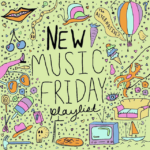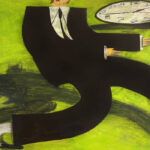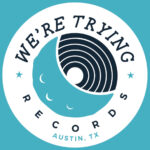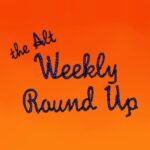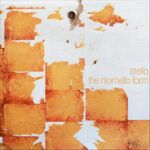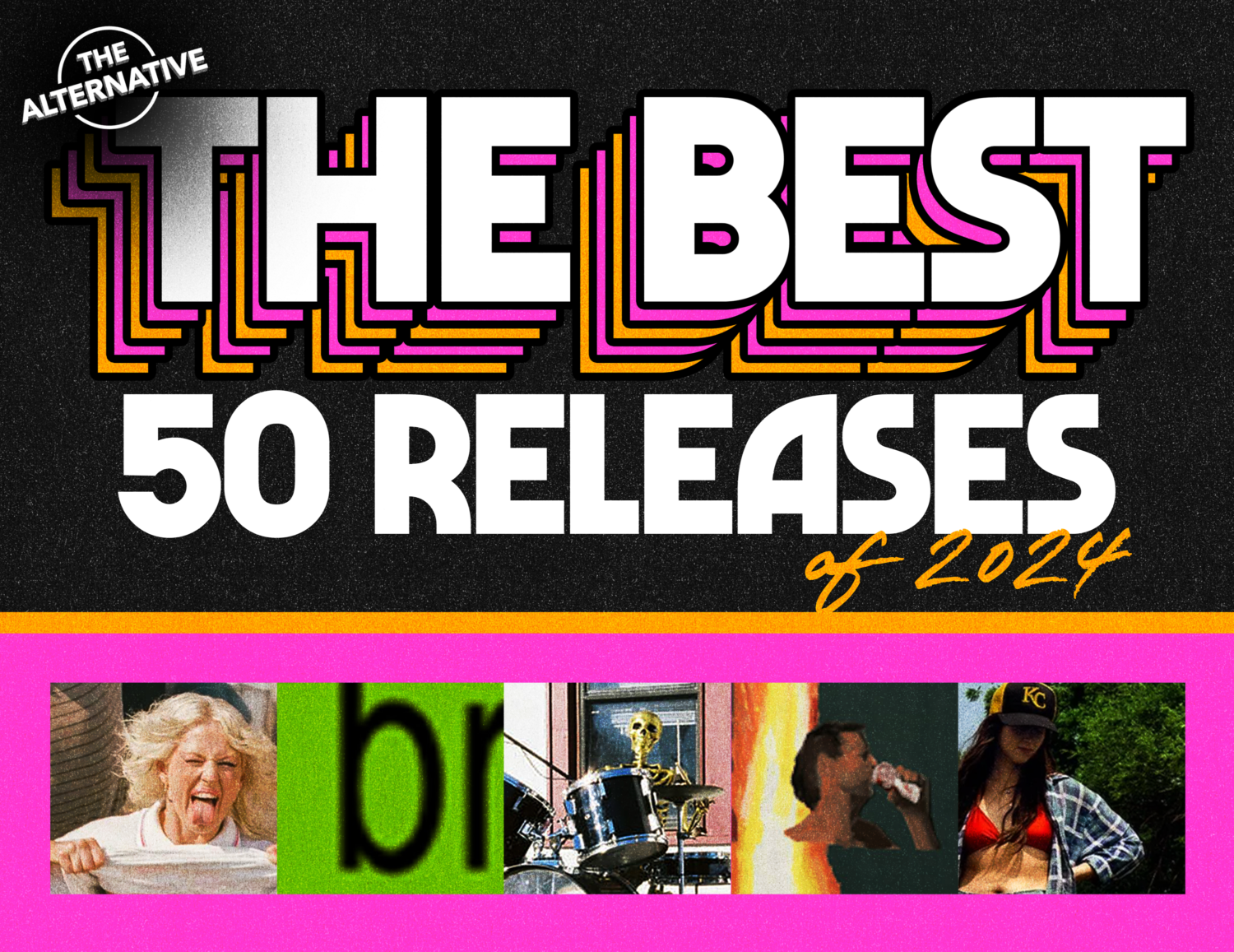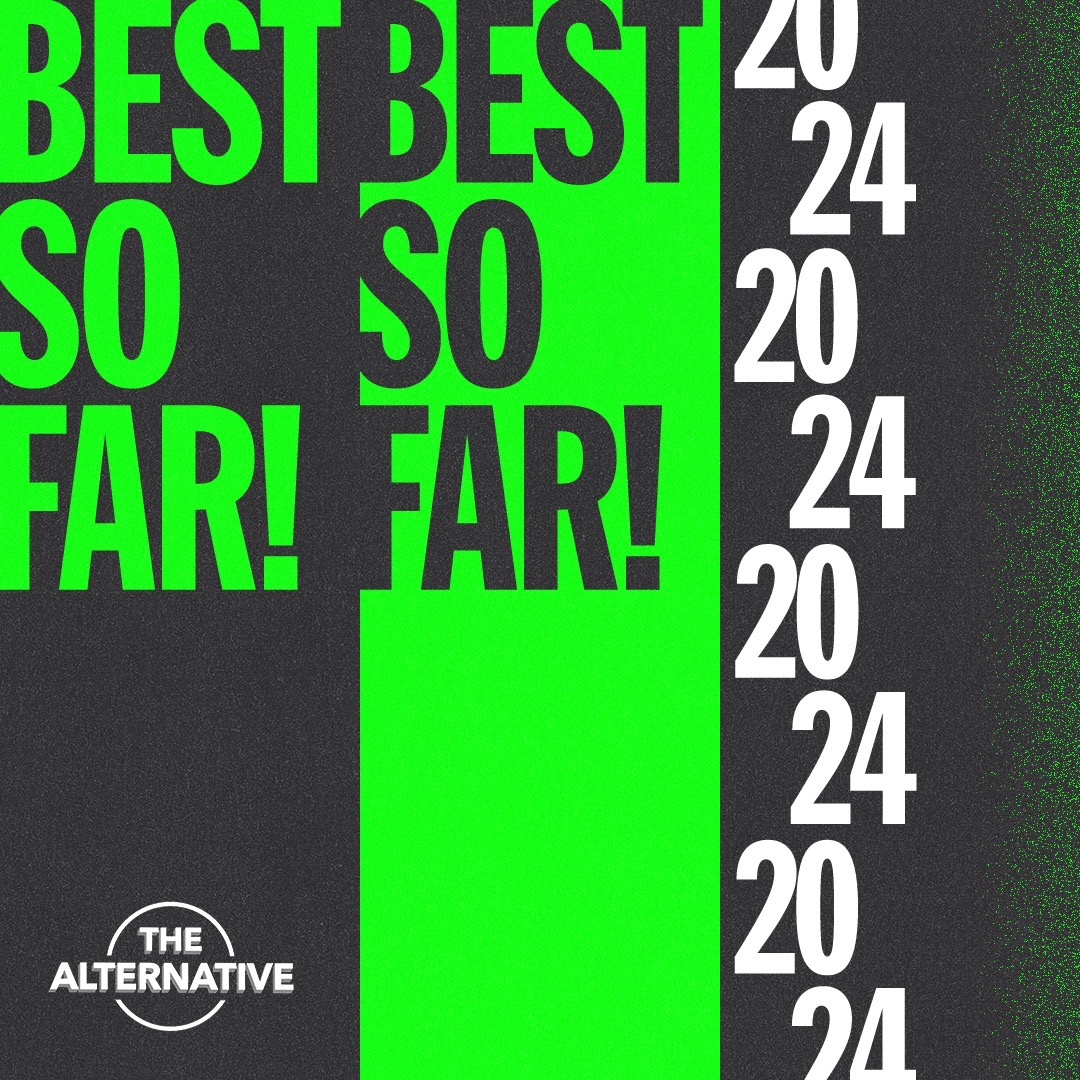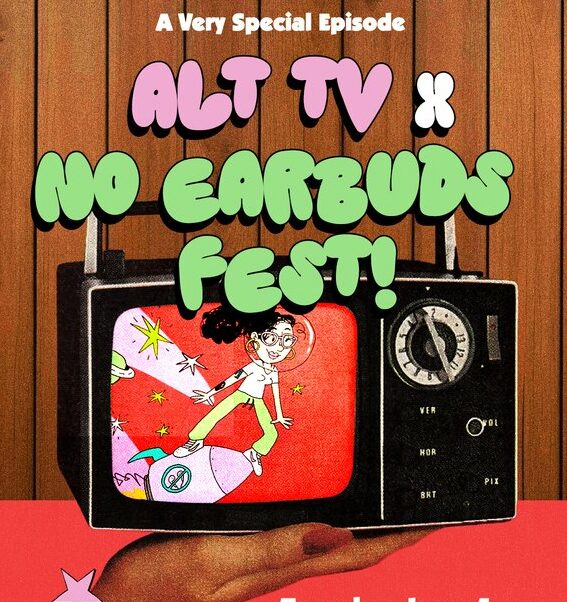Interview: Joe Calixto
Posted: by The Alt Editing Staff
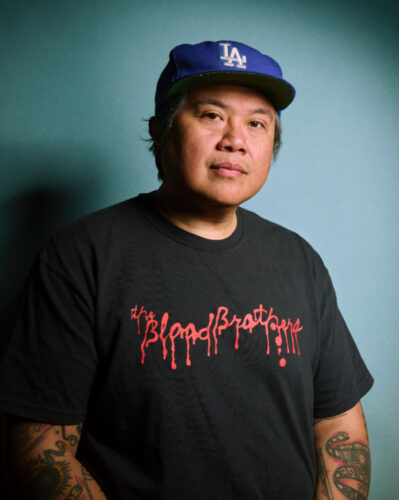
Photo by Isa Dimaranan
Two years ago, Los Angeles based photographer Joe Calixto (otherwise known as shutterhappyjose) shared that he was putting together a photo book focusing on the Asian American experience within the hardcore and punk scene. In between tours with bands like SeeYouSpaceCowboy and The Get Up Kids, Joe reached out to Asians all across the country from various backgrounds who shared their experiences in his debut book No, Where Are You Really (Really) From? about their introduction to punk, what it has been like seeing more Asians in the scene, advice for other Asians and people of color, and how punk has shaped their lives.
It’s 115 pages printed in full color in celebration of Asians who grew up in a subculture that wasn’t considered a cultural norm and features portrait photos of some familiar faces with members from a few bands we’ve featured on the site like Crystal Pak of Initiate, Kei Yasui of Have Heart, Nate Punty of Spiritual Cramp, and Kamtin Mohager of Heavenward, along with personal statements from various contributors.
Halfway through the project, I sat down with Joe to talk about his own personal journey with music, how he eventually got involved with the LA punk scene, and why he wanted to make this book in an exclusive interview from his book below.
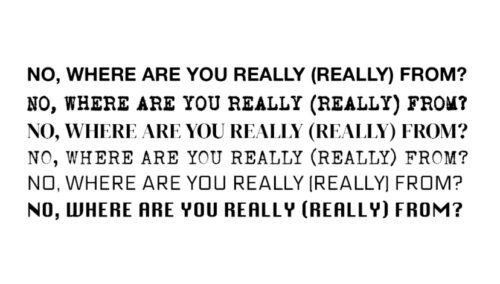
The elements that make up a music scene are wholly unimaginable without all those who contribute to it- particularly those that are bred from a DIY mindset such as the hardcore punk scene. From musicians to photographers, videographers, writers, or listeners, every person plays a part no matter how big or small that role may be. At least, that’s what the music taught us. To do more than just listen. To be involved. To show up and seek out community even when we didn’t see those who looked like us within the scene upon first glance. When we look closer however, we see that many of us have been here all along, staking ground in a scene that far from resembled the various cultural backgrounds that we come from as Asian Americans. For years, one of those individuals who has paved his own way through capturing some of the most dynamic photos within the punk community, is No, Where Are You Really (Really) From creator and live music photographer / content creator Joe Calixto.
Born and raised in Cebu City, Philippines, Joe mostly grew up listening to mainstream rock, but as he got into skateboarding as a teenager, he found himself immersed in its culture that naturally fell in line with punk rock. “I got into skateboarding, so the music was there, but I didn’t get involved in a ‘scene’ until I was in college. I was into more mainstream rock music, and I remember going to a record store one time and going to the rock section where I saw Victory Records on the bottom shelf and I grabbed this one tape that caught my eye because of the cover,” he shares. The tape was Victory Records’ first compilation series, Victory Style One which featured a striking illustration of angry punk kids with clenched fists moshing. Struck by the intensity and aggression of the cover art and music of bands like Strife, Earth Crisis, Cause for Alarm, and Snapcase, Joe shares, “It was just crazy music and like every other kid who gets into stuff, I just deep dived on stuff like that. I Asked Jeeves, ‘What other shit is Victory Records about?’ and the rest is history.”
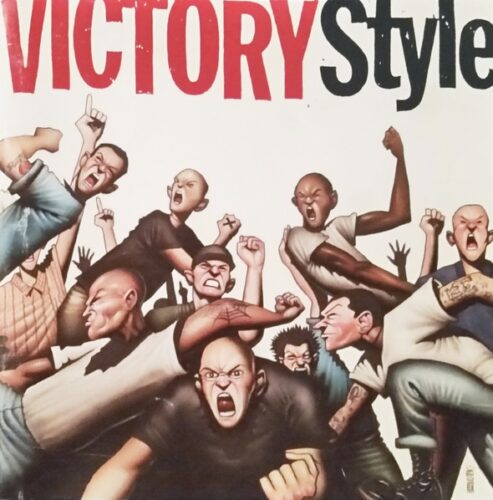
Back home in the Philippines, his first experience with attending shows had been going to punk / hardcore adjacent shows in the next city over. “There would be punk, emo, ska, hardcore shows and like 20 bands playing three songs. Most of them covers. That’s how I got into it and then other people from other cities would come and bring a different influence to the scene.” He recalls one instance where he witnessed moshing for the first time, “I remember this one guy came to our city and I was like, ‘What the fuck is this guy doing?’ I had never seen anyone mosh like that before and it was so fucking funny and interesting.” As his interest in the music scene grew, it felt as if he and his friends had stumbled upon a secret. “In the Philippines, I thought that it was just the 10 of us in our friend group that knew about it,” he shares.
When looking back on what inspired him to become more involved within any kind of “scene,” he refers to a time when a band from another city in the Philippines had asked him ‘What’s the punk scene like here?’ and he didn’t have an answer. “I think that was one of the first times I had heard about ‘the scene,’” he says. This would propel him and his brother into starting a makeshift record label of their own, although he disavows it as ever being a true record label and defined it as more of a collective that shared music. Shortly thereafter, he and his brother would begin their own Weezer cover band. Joe shares, “I didn’t know anything about playing music, but the singer sang like Brandon Boyd. So it was like Weezer, if the guy was singing Brandon Boyd parts, but I really wanted to play New Found Glory shit. I was just so afraid to start a hardcore band because I was like, no one’s gonna like us.” Later on however, after receiving an mp3 disc loaded with emo, alternative, punk bands like Thursday, Taking Back Sunday, Saves the Day, Get Up Kids, Finch, Alkaline Trio, he would find himself in a new band with his brother that took on a post-hardcore style. Soon after, it seemed as if everyone around them were starting punk bands.
While Joe’s first experience within an alternative music scene began amongst a small group of friends in the Philippines, his introduction to the scene in America introduced him to something much bigger. Upon moving to Los Angeles, his experience with show going changed dramatically when it came to attending and eventually participating at punk shows, though this did not happen immediately. “It took me awhile because when I first moved here in ’05, my very first job didn’t allow me to go to shows. I was a live-in caregiver as a 20 year old. That’s what I did for the first year I lived here and my work was three blocks away from the Cobalt Cafe,” he shares. “When I moved to America, I bought my first DSLR and for the entire year, I was just taking pictures of the fucking backyard of the place I worked at, just taking pictures of flowers. The first show I ever shot was my cousin’s show at the Cobalt. I shot that show and then shot the band before them who were a local band and they asked me to send them their photos, and then asked me if I wanted to shoot their show at Chain Reaction. Then it just snowballed from there and I brought my camera to more hardcore and punk shows.”
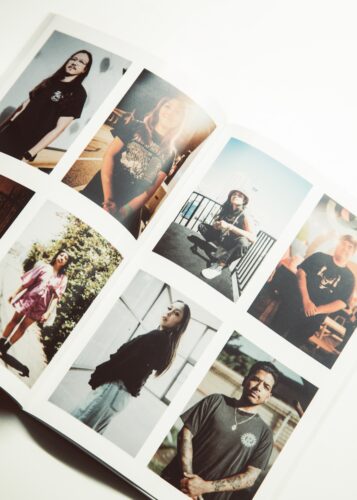
In pursuit of capturing the intensity of hardcore punk shows, opportunities began presenting themselves and allowed Joe to become more involved within the Los Angeles scene. The aggressive nature of the music and the atmosphere it cultivated is something that continues to inspire him to participate and contribute in some way. “There was something there, like, you just watch it and everyone’s going off, but in a non-violent way. I was like, this is cool the way you can be angry and aggressive.” Even when it comes to the musicality of it, he expresses how he loved the accessible easy-going aspect of alternative rock, but when it comes to hardcore and punk, the music goes beyond, treading in raw uncomfortable truths and heavy dissonant territory that affected him more than any other music had before.
The hardcore and punk scene is also unlike any other culture Joe had been familiar with before and it was in stark contrast to the one found directly at home. As someone who grew up within an Asian household, the appeal of an outlet for aggression and excess anger was something he discovered belonged to him alone, as his parents didn’t exactly approve of it or anything that resembled chaos and potential danger. “Growing up, it was my thing. I didn’t want to explain to anyone else. I didn’t want to explain Earth Crisis to my mom. Explaining Nirvana to my mom was already crazy. She thinks Oasis is crazy. But as a kid, you’re not allowed to listen to crazy ‘devil music.’ Which made me like, ‘Alright, I’m gonna listen to it even more,” he laughs defiantly.
As he attended more hardcore and punk shows in America, he noted that not a lot of Asians took active interest in it at first. “Going to hardcore shows, you didn’t notice a lot of Asian people there. In the mid-2000s I remember thinking, I can’t be the only one who likes music like this. I think about it now and I’m sure there were, but just like me, we were always in the back,” he reflects. “It’s like there was this one time I went to this venue in the valley and Touché Amoré were playing and I really wanted to see them because they were the new band. I got to that place and just stood in front and was like, I don’t know anyone in this place, I’m leaving. I went home. I didn’t even go to the show. I didn’t get to see Touché until a year later. When I moved here, I didn’t have friends. I had like five friends and half of them didn’t even go to rock shows. I missed out on a lot when I first moved here just because of that mentality. There’s bands that I fucking love like Hopesfall and it took me 18 years to finally see them, but they were active then or even Texas is the Reason. I just never went to their shows. Then there was a show for The Get Up Kids, my all time favorite, that I was like I really need to go, and I didn’t care if there was no one with me. So I went to that show and after that, I got more comfortable and became more outgoing when it came to meeting people and shooting live shows,” he shares.
Becoming more involved within the punk and hardcore scene has ultimately helped shape his core identity as a creative and made him more confident in his artistic abilities. The ideals of punk have since helped him navigate his day-to-day life whether that’s working on creative projects or simply finding solutions to issues and obstacles that arise in life. “Punk has rewired me in a way where it’s like, everything I do in life goes back to the DIY ethos where it’s like you don’t have to do things the proper way. If you can do it like yourself then you’re gonna make something out of it. I approach everything with that same mindset with creativity or while touring. The whole DIY ethos is very crucial to how I live my life. I’ve been in this game for almost 20 years and it definitely feels surreal to me, but I also just keep reminding myself, I’ve worked hard to be where I’m at,” he says.
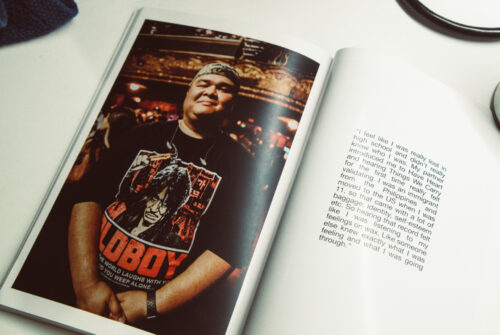
In putting together this project that exclusively features Asians in the hardcore and punk community, Joe hopes to bring more awareness to the idea that we don’t have to live up to the standards of others when it comes to our own cultural identities. In fact, we are allowed to take up space and create our own paths, something that those in the hardcore community have both indirectly and directly shown us. “I am a firm believer that representation is very key to anything in the creative world. When I started this project, I always thought growing up, I never saw anyone who looked like me at shows, or not a lot of us and then I slowly realized that there are more people. This world of hardcore music is already very niche. Even in the world of rock and roll, you can make it more microscopic, where it’s like Asian people in this world – it’s even smaller. I just want to showcase how we’re here and we’re absolutely killing it. Asians can also have fucking crazy fun. We’re not all about being nurses and engineers and doctors.”
One of the most rewarding aspects of doing the project has been hearing other Asian stories. “Everyone’s from different backgrounds and not everyone had it hard. Maybe there were some who never doubted themselves. It’s good to hear shit like that, like they never let being Asian pull them down, which is amazing. I wish I was like that earlier growing up in the Philippines because we had our own issues with colorism and I grew up having the mindset where if you’re not light skinned, you’re not going to be successful in life. There were times I even fucking would not buy lunch because I would buy whitening soap. Yeah, that got me because it was like if you’re not skinny, and you’re not light skinned, you’re not gonna be good at anything.”
This inner struggle growing up would ultimately push Joe to become more involved with things that emboldened him to defy this societal expectation of who he should be at a young age. Through skateboarding and punk rock, he found a way to free himself of other’s expectations, and in fact do what he wanted in spite of them. “I was a fucking big kid on a fucking piece of wood on wheels. So everyone would be like ‘ah, this guy’s gonna eat shit, break his board.’ And then I’d do a fucking kickflip down the stairs and they would lose their shit. Now, see? I love that feeling. Yeah. Stick it to the fucking haters. I’m fucking Asian as fuck, and I vibe with it,” he shares proudly. “There’s no room to be fucking ashamed of it and there’s no room to be wishing you were someone else, because at one point in my life I was like, I wish I was fucking white.”
As the interest around hardcore continues to grow, it seems more Asians than ever have also shown up in these spaces over the last few years alone. It has slowly become more common as a place where we are allowed to be because the music resonates with us just as much as any other person. With the US debut of a band with strong Asian representation in it such as Australia’s Speed at 2022’s Sound and Fury, thousands of people paid attention to them, but they were also given a certain amount of respect as they took center stage that day. Joe expresses, “It just shows that you can be that, you can look like that. You don’t have to play Bruno Mars shit, you know or R&B. It’s like, we’re here. We’ve always been here, and now I just want to showcase that we’re here in this hardcore scene too. It makes being Asian cool.”
No, Where Are You Really (Really) From? is available to order here.
—
Loan Pham | @x_loanp
The Alternative is 100% supported by our readers. If you’d like to help us write about more great music and keep our site going, you can become a Patron on Patreon, which also allows you to receive extra content, sweet perks, and The Alternative merch, with levels starting at only $2 per month. Everything helps, and if you can’t afford to donate, consider sharing this article and spreading the word about our site! Either way, thanks for reading!

